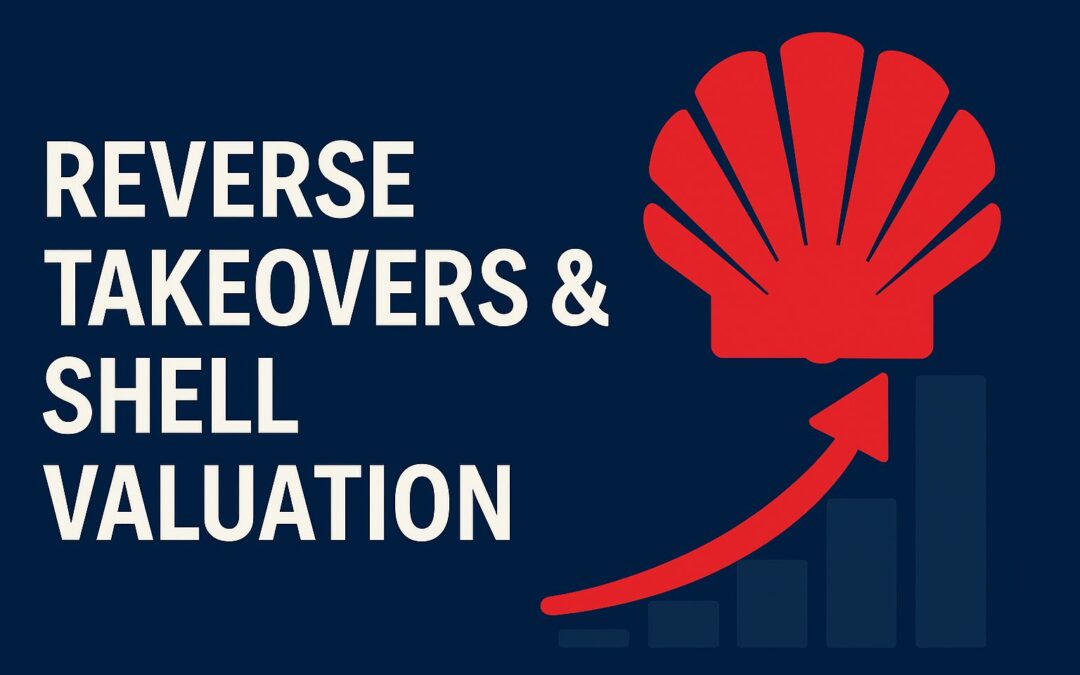Reverse Takeovers in Canada: The Real Economics of Valuing a Shell
Why It Matters
For many private companies aiming to go public in Canada, a reverse takeover (RTO) seems like a faster, more affordable shortcut than an IPO. But the appeal of “taking over a shell” often overshadows the real economic, legal, and governance consequences. Valuing that shell entity—correctly—is central to getting the deal right.
The Surface Allure of a Shell Transaction
RTOs are often pitched as plug-and-play transactions: find a public shell, inject your business, and start trading. This framing tends to focus on speed and simplicity. In theory, shells are already reporting issuers with an exchange listing—meaning the private company can avoid prospectus filings, minimize upfront costs, and access public markets sooner.
But what’s not always clear is that a reverse takeover is not a shortcut—it’s a corporate combination. It requires thoughtful negotiation, regulatory approvals, fair market valuations, and post-transaction integration. Many founders focus too narrowly on the listing mechanics and overlook the deeper structural implications.
Shells Are Not Just Empty Vessels
Public shells come in many forms: former operating companies that divested their assets, CPCs that failed to complete a qualifying transaction, or listed issuers that were cleaned up post-cease-trade. Some are clean and well-capitalized. Others come with baggage: legacy liabilities, cap table complexity, unclear control dynamics, or unresolved regulatory issues.
Valuing a shell properly requires due diligence across four dimensions:
1. Capital Structure
What does the shell’s current cap table look like? How many shares are outstanding? Are there legacy options or warrants? Founders often overlook the dilution impact of acquiring a shell with a bloated share count. A clean shell typically has 5–10 million shares outstanding pre-transaction—anything more may signal trouble.
2. Cash and Liabilities
Does the shell have any cash? Any debts or payables? Even modest liabilities (like unpaid audit fees or historical tax issues) can create future headaches. Many shell valuations are effectively net-cash positions—so if liabilities exceed cash, the shell might be a liability itself.
3. Listing and Compliance Status
Is the shell in good standing with its exchange? Has it filed all continuous disclosure documents? A clean listing status matters—reviving a cease-traded shell or curing disclosure defaults adds both cost and time.
4. Shareholder Base and Voting Control
Who controls the voting shares? Are there investor groups with blocking rights or historical allegiances? Shells with fragmented or opaque shareholder structures can create governance headaches post-RTO.
What’s a Shell Really Worth?
Market participants in Canada often quote a shell value in the range of $1,000,000 to $1,500,000, but that figure is not absolute—it reflects a blend of hard and soft factors:
- Hard components include listing status, audited financials, clean capital structure, and regulatory compliance.
- Soft components include the speed of transaction execution, shell reputation, and the parties’ relative bargaining power.
In practice, pricing varies widely depending on supply and demand. During boom periods, clean shells can command premiums. In quieter markets, even good shells can sit idle. Shell owners often anchor to sunk costs or legacy valuations, which may not reflect current realities.
What Founders Often Miss
Valuation is just one piece of the puzzle. A reverse takeover is not just a financing strategy—it’s a change of control transaction. The founders of the private company must assess:
- How much equity are we giving up to acquire this shell?
- What liabilities—legal, financial, or reputational—might we inherit?
- Are we comfortable with the shell’s legacy shareholders and governance structures?
- Will this shell support our capital-raising plans post-RTO?
Too often, founders underestimate the friction and fragmentation that can emerge from poorly structured RTOs. Misaligned shareholder expectations, lack of post-deal cohesion, and patchy disclosure histories can all drag on future performance.
A Transaction, Not a Shortcut
Reverse takeovers are legitimate go-public pathways—but they’re not magic doors. They require the same level of diligence, valuation discipline, and post-transaction planning as any other public listing strategy. Treating the shell as a product rather than a partner often leads to problems later.
Closing Thought
For companies considering an RTO, shell valuation is not a box to check—it’s a window into the transaction’s true complexity. The better you understand the economics of the shell, the stronger your foundation for a successful public listing.
For more insight on structuring reverse takeovers or valuing public shells, contact us.

